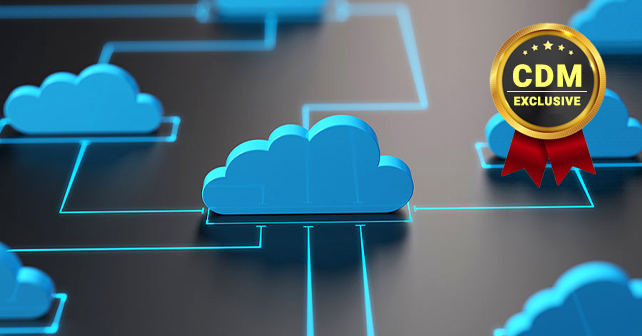By Claude Schuck, regional head, Middle East at Veeam
The ways businesses leverage the cloud to manage and maximize the value of their data continue to evolve. The years when adopting cloud-based solutions felt like the first step into some brave new world may be behind us, but with every new cloud-consumption model comes new questions. Multi-cloud, the current variation of cloud deployment, is attracting attention, questions, and scepticism from businesses.
Whereas a hybrid cloud is a single entity, an amalgamation of a private cloud with public cloud environments, multi-cloud simply includes multiple clouds. It is a nod towards the fact that businesses are increasingly using different clouds for different purposes. In today’s digital economy, 81% of enterprises are embracing a multi-cloud strategy.
It is common for the IT industry to promote the idea of a one-stop shop model – a single point of failure – to avoid the perceived inefficiency and confusion of dealing with multiple vendors and cloud service providers (CSPs). Data is now described as the oil of the digital economy, a company’s most valuable resource, so as businesses demand an infrastructure which maximises the potential value of that data, IT departments are under pressure to deliver.
For example, a business may wish to store data from its fastest growing business unit in Google Cloud for scalability at the relatively low expense but use AWS for its R&D databases to enjoy the benefits of AI and voice-assisted search. Whereas previously the only viable decision for the business would have been to make a judgment call based on its priority needs and budget constraints, the best strategic option is now to adopt a multi-cloud approach.
Data-driven transformation
There is a movement from organizations to become more data-driven, with business leaders recognizing the importance of data in both high-level business strategy and operational decision-making. Furthermore, consumers and employees are beginning to appreciate the true value of their data, which means businesses must ensure that the people who share data with them see the value in doing so through receiving more personalized experiences. People want to know that their data is protected and is secure, but they also want greater transparency about what it is being used for.
Creating this data-driven culture is underpinned by continuous digital transformation – embracing the latest and greatest technologies which allow the business to repeatedly lift its performance levels. According to Gartner’s 2018 CIO Agenda report, making progress towards becoming a digital business is a top priority for CIOs – and the proliferation towards multi-cloud reflects this trend.
Despite this, the latest Veeam Availability Report reveals that two-thirds of senior IT leaders admit their digital transformation has been held back by unplanned downtime. And successful multi-cloud deployments depend on the availability of all apps and data, at all times. So, businesses looking to take advantage of multi-cloud environments must ensure that their apps and data are always available – and that their culture of data-driven decision-making is fully supported to maintain customer confidence and brand reputation.
Availability in the multi-cloud
The complexity of maintaining availability within a multi-cloud environment is the reliance on multiple CSPs. While all major vendors and CSPs will make backup and disaster recovery (DR) solutions available to their customers, each provider has different protocols, service level agreements (SLAs) and capabilities; and the last thing any business wants to hear when disaster strikes is that they are not adequately protected or that recovery has failed. While no business, regardless of whether it is using multi-cloud or not, can guarantee that it will never experience unplanned downtime, every business can ensure that it is prepared for this possibility.
Therefore, businesses opting for the multi-cloud need to ensure that they have an availability solution which sits cross their entire cloud provision, making cloud data protection easy with a seamless process for sending data offsite to the cloud. As well as a reliable backup and DR solution which is interoperable with all major CSP solutions, the platform should provide businesses with full visibility of data availability across their entire multi-cloud infrastructure.
For businesses using multi-cloud to power their digital transformation in the bid to establish a more data-driven culture across the organization, data is akin to running water – a utility which all rely on and must be available at all times. Businesses embracing multi-cloud should not be put off by the prospect of working with multiple vendors as certain software-based platforms can give peace of mind and a turnkey solution to minimizing downtime.
About the Author
 Claude is an ICT industry veteran with over 22 years of experience in various roles including account manager, sales manager, channel manager and PC engineer in companies like Dell, EMC, and HP. Claude can be reached online at ([email protected]) and at our company website https://www.veeam.com
Claude is an ICT industry veteran with over 22 years of experience in various roles including account manager, sales manager, channel manager and PC engineer in companies like Dell, EMC, and HP. Claude can be reached online at ([email protected]) and at our company website https://www.veeam.com


